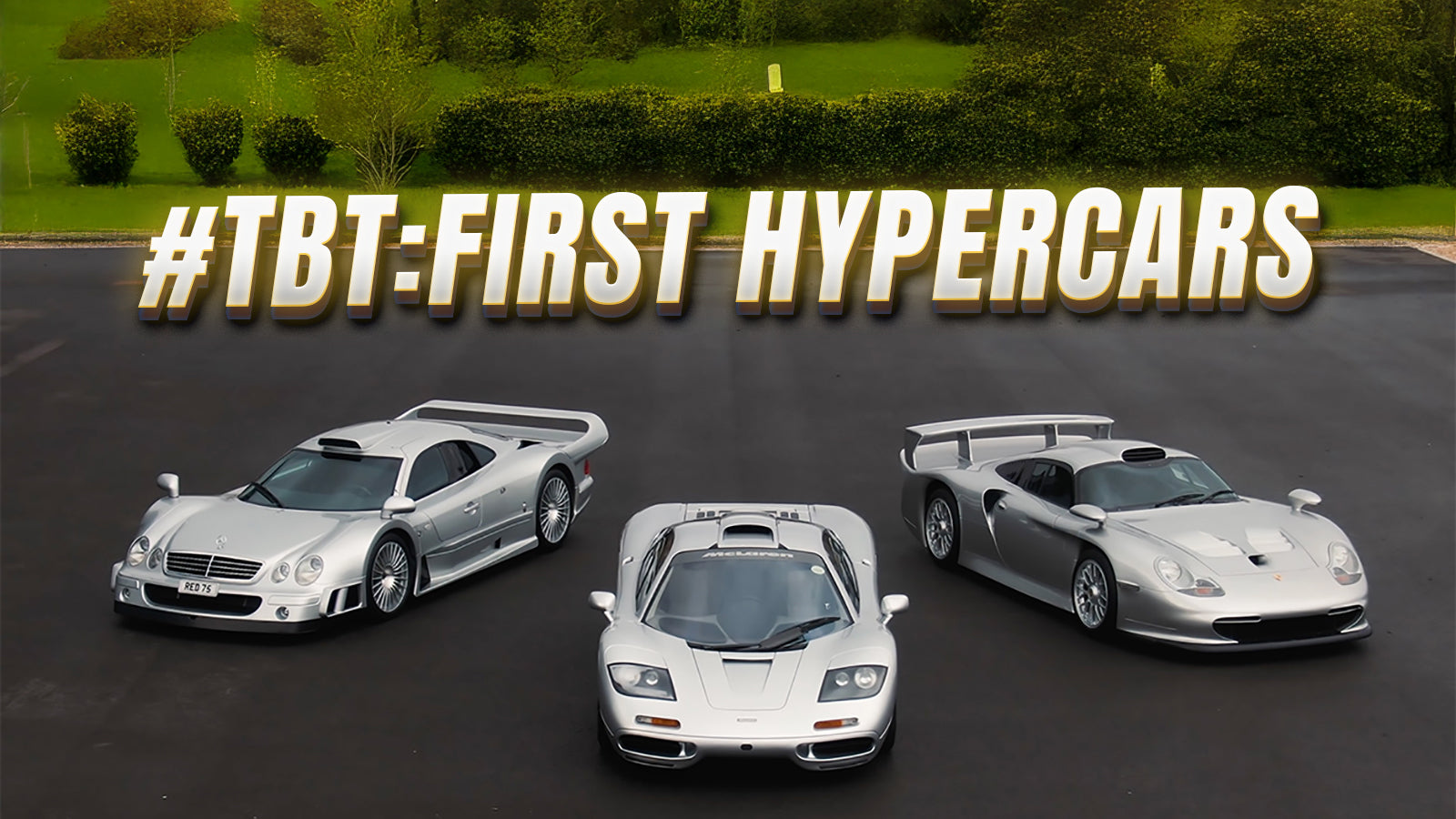Jueves de Recuerdos: El Legado del Toyota Supra MK4
Compartir
Throwback Thursday es un viaje semanal por el camino de los recuerdos. Iluminamos la importancia cultural de los coches héroes del pasado, que allanaron el camino para la maquinaria que disfrutamos hoy.
Cuando se trata de leyendas JDM, hay varios modelos que vienen a la mente, pero solo unos pocos han logrado alcanzar el estatus legendario del Toyota Supra MK4, incluso apreciado por aficionados a los autos que por lo demás son indiferentes a los deportivos japoneses.
Producido entre 1993 y 2002, el coche representó una evolución significativa en las capacidades de ingeniería de Toyota en un mercado donde cada fabricante japonés intentaba superar a sus competidores. El A80 Supra rápidamente se convirtió en un verdadero ícono de la escena JDM con un diseño que estaba muy adelantado a su tiempo, consolidando su lugar entre los mejores coches deportivos japoneses de todos los tiempos.
Exploremos dónde comenzó ese legado y qué le dio al Toyota Supra de cuarta generación su estatus de culto.
Historia de fondo: Dónde todo comenzó
En los primeros días del modelo, el Supra ni siquiera era un modelo independiente. Lanzado a finales de los años 70 como una variante del Celica, que fue el primer intento de Toyota de un coche deportivo tras el legendario 2000GT, competiría con modelos como el Datsun 280Z. El vínculo entre el Celica y el Supra existió hasta que el Supra se convirtió en un modelo propio en la tercera generación.

Toyota Supra se convierte en un modelo propio en los años 80.
Para cuando se lanzó la cuarta generación, codificada internamente como A80, el Supra había madurado hasta convertirse en un deportivo capaz que competía con los europeos en la carretera, y mostraba un gran rendimiento en el automovilismo, ganando títulos de pilotos en el JGTC incluso años después de que el coche de calle dejara de producirse.
Diseño: La forma se encuentra con la función
Con todos los deportivos europeos de formas cuadradas a principios de los 90, las líneas suaves y elegantes del MkIV Supra estaban muy adelantadas a su tiempo. Sin embargo, no todo es solo por la forma, el icónico alerón trasero proporcionaba una reducción significativa en la sustentación y las líneas elegantes con los conductos de refrigeración inteligentemente posicionados han contribuido a un coeficiente de arrastre de solo 0.33 Cd, igualando a los deportivos (¡e incluso a algunos superdeportivos!) de mediados de los 2000.

Al entrar en la cabina, el diseño completamente enfocado en el conductor crea una experiencia de conducción íntima y envolvente. Todos los controles esenciales están completamente orientados hacia el conductor, y la consola central actúa casi como un divisor, brindando al conductor una cabina similar a la de un coche de carreras. Solo con abrir la puerta y echar un vistazo, se puede notar que es un verdadero coche para conductores. Esta estética atemporal es lo que cautiva a los entusiastas de los coches incluso hasta el día de hoy.
Otra Leyenda: 2JZ-GTE Bajo el Capó
En el corazón del estatus legendario del Supra está, por supuesto, el motor, el 2JZ-GTE.
La familia de motores JZ de Toyota se utilizó en muchas aplicaciones diferentes, en configuraciones variadas. Las unidades de potencia 2JZ-GTE de gama alta producían 320 HP en el mercado estadounidense, 325 HP en el mercado europeo y 276 HP en Japón, debido al acuerdo de caballeros vigente durante los años 90. Como el motor fue diseñado pensando en un rendimiento fiable, se construyó con un robusto bloque de hierro fundido y componentes internos forjados. Poco después de que el motor saliera al mercado, esta base sólida ha permitido a los afinadores alcanzar niveles de rendimiento que aún hoy son muy difíciles de lograr.

El 2JZ-GTE no era simplemente un motor; era una plataforma para la innovación y la creatividad entre los entusiastas del rendimiento. Incontables mejoras del mercado de accesorios permitieron a los afinadores llevar los límites del rendimiento al máximo. Incluso después de más de 25 años desde su creación, el 2JZ-GTE todavía encuentra su lugar en los compartimentos del motor de cualquier cosa imaginable, con potencias que superan cómodamente los 1,000 HP con las modificaciones adecuadas.
Manejo Preciso con Rendimiento Puro
Mientras que el 2JZ-GTE del Supra y el rendimiento en línea recta que lo acompañaba llamaron la atención, sus capacidades de manejo fueron igualmente impresionantes. Equipado con una suspensión de doble horquilla y una distribución de peso casi perfecta, aseguraba un manejo preciso y estabilidad, ofreciendo una experiencia atractiva tanto en la carretera como en la pista.

Los avances tecnológicos también jugaron un papel clave. La opción de la transmisión manual Getrag V160 de seis velocidades permitió que el coche se mantuviera más en su rango óptimo de potencia, mientras que características como el diferencial de deslizamiento limitado y la suspensión controlada electrónicamente elevaron su rendimiento. Estos sistemas llevaron al Supra de cuarta generación a la era moderna de la tecnología automotriz avanzada.
Icono de la cultura pop
La popularidad del MkIV Supra no se limitó a la pista o la calle. Su impacto cultural se disparó hacia el final de su vida, cuando protagonizó la legendaria película de 2001 The Fast and the Furious. La interpretación de Paul Walker como Brian O’Conner conduciendo un Supra A80 naranja y fuertemente modificado presentó el coche a una audiencia global, y la escena en la que vence a un Ferrari negro ha demostrado que la insignia llamativa con el elevado precio no siempre es suficiente. Esta aparición convirtió rápidamente al Supra en un ícono de la cultura pop y fomentó el interés en los coches de alto rendimiento JDM entre los aficionados a los coches de todo el mundo.

"Más de lo que puedes permitirte, amigo. Ferrari."
Más allá de Hollywood, el Supra encontró su camino en los videojuegos y exposiciones automotrices, integrándose aún más en la cultura automovilística global. Su presencia en juegos como el legendario Gran Turismo y Need for Speed permitió que toda una generación de jóvenes entusiastas de los autos lo experimentara en sus hogares, convirtiéndolo en un auto de ensueño para ellos. Esto es en parte lo que aún impulsa la popularidad (y el aumento de valor) del Supra, ya que esta generación ahora está en posición de cumplir su sueño de infancia de conducir un ejemplar hecho con buen gusto.
El MK4 Supra sigue fuerte
Aunque el MK4 Supra dejó de producirse en 2002, su influencia sigue vigente hasta hoy. La rareza del coche, su pedigrí en ingeniería y su importancia cultural lo han transformado en el sueño de los coleccionistas. Los precios de ejemplares impecables y sin modificaciones se han disparado en los últimos años, alcanzando cifras cercanas a las de un coche deportivo nuevo y de alta gama (¡lee seis cifras!). Esta influencia y popularidad llevaron a Toyota a revivir el nombre Supra en 2019. El MK5 Supra, conocido internamente como el A90, ha despertado interés en la comunidad de entusiastas, aunque no sin cierta controversia. Al ser un proyecto conjunto con BMW, algunos dijeron que perdió su espíritu de ser un verdadero ícono JDM.

Aunque se aleja de lo que fue el A80, sigue siendo una opción principal para quienes buscan un rendimiento confiable, un enorme potencial de ajuste y un gran homenaje al legado del A80.
El MkIV Toyota Supra trascendió el papel de un simple coche deportivo entre una competencia muy fuerte; se convirtió en un símbolo de la ingeniería japonesa y la relevancia cultural. Demostró la capacidad de Toyota para producir un vehículo que pudiera competir con los mejores del mundo, sin gastar una fortuna como algunos de sus competidores en ese momento.
Su diseño icónico, un motor potente y un profundo impacto cultural aseguran que el A80 seguirá siendo celebrado mientras tengamos autos deportivos en la carretera.
###img_gal###30012025###img_gal###
¡Obtén la respuesta del acelerador MK4 en tu A90 GR Supra!
El icónico motor 2JZ en el MK4 Supra es alabado por muchos atributos, incluyendo durabilidad, componentes internos robustos que pueden soportar más del doble de su potencia original, y más. Uno de esos atributos es la respuesta del acelerador, y no es difícil entender por qué: utiliza un acelerador de cable a la antigua. Ofrece una conexión directa y pura de pedal a potencia 1:1 que todo purista de la conducción adora.
Los vehículos modernos, incluyendo el Supra de generación A90, utilizan sistemas electrónicos de acelerador. Hay muchas razones por las que los fabricantes optan por esta vía, y el drive-by-wire tiene sus propias ventajas. Sin embargo, una gran desventaja de los sistemas DBW es el retraso inicial en la respuesta del acelerador. La respuesta nítida e instantánea del acelerador de los motores antiguos se ha perdido hace tiempo.

Pedal Commander® entra en juego justo aquí; elimina el retraso del acelerador y devuelve esa sensación de acelerador por cable a los coches más nuevos. Pedal Commander® se instala en minutos, se integra perfectamente en el conjunto del pedal del acelerador de serie con conectores OEM, compila la señal del acelerador de serie en su microprocesador avanzado, y modifica la curva del acelerador con un mapeo específico para el vehículo. El resultado es una entrega de potencia instantánea sin retrasos, sin sacudidas y sin vacilaciones. Obtienes un rendimiento puro cada vez que pisas el pedal del acelerador.
Pero eso no es todo. Pedal Commander® te permite personalizar completamente la respuesta del acelerador con cuatro modos de conducción—Eco, City, Sport y Sport+—cada uno con nueve niveles ajustables. Eso son 36 formas de ajustar la respuesta perfecta, ya sea que quieras una conducción diaria suave o una descarga total de adrenalina.
Y para mayor tranquilidad, Pedal Commander® viene con un modo antirrobo que desactiva completamente el pedal del acelerador con un solo toque. Puedes añadir una capa extra de seguridad a tu orgullo y alegría con el sistema de seguridad para vehículos más simple y efectivo. Puedes probarlo GRATIS durante 14 días, y después de eso, cuesta solo $0.99/mes o $9.99/año, ¡más barato que una hamburguesa o una taza de café!
Haz clic AQUÍ para conocer todo sobre la mejor mejora plug-and-play para el Toyota Supra A90, y selecciona tu vehículo abajo para ordenar el tuyo hoy mismo!
###btn###¡HAZ CLIC AQUÍ PARA OBTENER EL TUYO!###btn###
###product###











